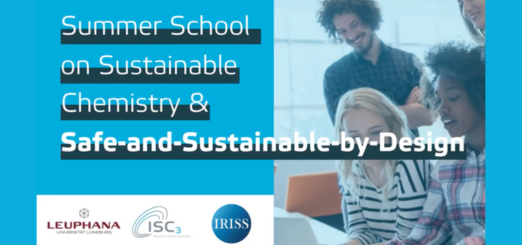Sustainable Chemistry addresses usage of resources, design, manufacture and use of efficient, effective, safe and more environmentally benign chemical products and processes and also includes alternative business models and ethical aspects. The worldwide implementation of sustainable chemistry is key to reduce unwanted environmental, health and societal impacts of chemicals and chemical products along their life cycle and to achieve sustainable production and consumption.
The EU’s Chemicals Strategy for Sustainability – towards a toxic-free environment was published in 2020 and is part of the European Green Deal. The strategy aims to further the transition towards chemicals that are safe and sustainable by design to avoid adverse effects on humans and the environment.
Safe-and-Sustainable-by-Design (SSbD) is a pre-market approach to chemicals, materials, products and processes that integrates safety and sustainability aspects at early stages of the innovation process, taking a life cycle perspective. Following the launch of the SSbD framework by the Joint Research Centre (JRC) of the European Commission, current work in the field of SSbD focuses on its implementation in industrial applications and the adaptation to the needs of specific sectors.
Therefore, this year’s Summer School focuses on the SSbD concept as one tool among many for implementing Sustainable Chemistry.
Leuphana University
Germany
